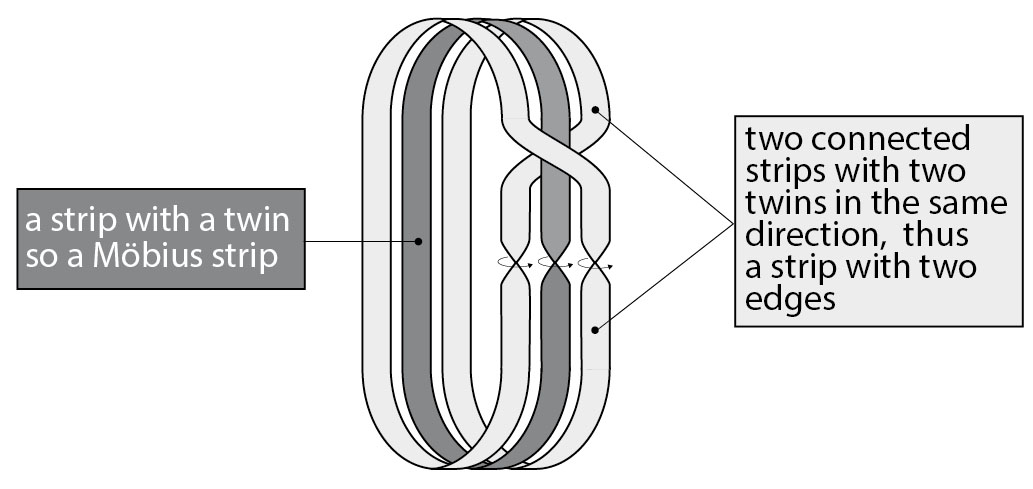A complete cut of a strip (= tape jointed to itself) is a cut which forms a loop in the strip interacting one, two, three… times with each ‘parallel’ of the strip. Namely a cut with one, two, three,... turns.
A complete cut of a strip individuates a geometrical object adding, at each turn, the number of edges of the initial strip.
Thus, for instance
• a complete cut with a turn of a strip with two edges generates an object with 2+2 edges, namely two strips with two edges,
• a complete cut with two turns of a strip with one edge (such as the Möbius strip) generates an object with 1+1+1 edges, namely a strip with two edges and a strip with one edge.
Since a ‘one third’ cut of a Möbius strip, to be complete, must turn twice around the strip, dividing the strip in two parts, this cut necessarily individuates a strip with two edges and a Möbius strip.
Then the two external parts individuated by the cut must be connected and must form a strip with two edges.
So, this cut separates the central part of the original Möbius strip from its external part, which is given by the conjunction of two strips as long as the central part.
Finally, since the edges of these strips are interlaced, the two resulting strips are linked.
NOTE. It is interesting that when the internal part disappears, the cut becomes a cut with a turn which individuates only the external part (with two edges).

